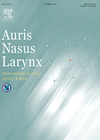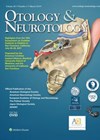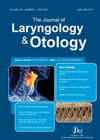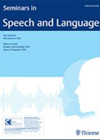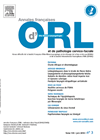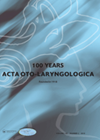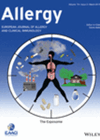
Journal Reviews
Which graft is better for type 1 tympanoplasty in elderly patients?
Type 1 tympanoplasty is a procedure performed to repair tympanic membrane perforations, primarily to reduce otorrhoea. This may subsequently lead to improvement of hearing. The common graft materials used are temporalis fascia and cartilage from tragus or concha. The authors...
What we need to know about the new frontier of inner ear therapies
This is an interesting and topical review of the emerging biotechnology and pharmaceutical solutions for hearing loss and related conditions such as tinnitus. This paper suggests we are on the cusp of a very large step-change in the way we...
Validating a new international cholesteatoma classification – a necessary but challenging task
A European and Japanese joint consensus statement was published in 2017 which proposed a new cholesteatoma staging classification (EJS), with four stages. This follow-up publication aims to assess the internal and external validity of the staging system using existing prospectively...
Radiological diagnosis of mastoiditis in patients screened for acoustic neuroma
Magnetic resonance imaging is the ‘gold standard’ for screening patients suspected to have acoustic neuroma. Various abnormalities are picked up through this investigation, one of which, not uncommonly reported, is mastoiditis. This requires referral to otolaryngology and further evaluation. In...
Systemic steroid therapy for reduction of macrophage migration inhibition factor in the control of nasal polyposis
It is believed that macrophage migration inhibitory factor mediates inflammation by stimulating the release of other pro-inflammatory cytokines. The use of systemic steroids in control of nasal polyposis is an established treatment. In this study the authors have aimed at...
The role of cVEMPs in the diagnosis of Meniere’s disease
This study sets out to determine the most useful metrics to use from cervical-vestibular evoked myogenic potential (c-VEMP) tests when the diagnosis of Meniere’s disease (MD) is unclear, or as a follow-up tool. It is known that cVEMPs can detect...
This is what SLTs can do for mild TBI: presenting a care model
The authors of this article estimate there are around six-to-eight million people who sustain a mild traumatic brain injury (mTBI) per annum in the United States (US) as a consequence of sports injuries, traffic accidents, military service-related injuries, falls, assaults...
The GP and the ear
General practitioners are the first members of the medical community to deal with ear problems. In this survey, 11 GPs examined 124 patients using a regular otoscope and a video-otoscope and reported their findings in a 10-item table. The same...
Peer-support group for people with a hearing loss
Peer-support groups’ (PSGs) involvement in rehabilitation of people with different health issues can have a very positive impact on the patients’ wellbeing as showed in a various literature on the subject. This study involves analysis of data from previous studies...
Is there hope of hearing for postmeningitic patients deemed unsuitable for a cochlear implant?
Rehabilitation of patients with profound hearing loss deemed unsuitable for cochlear implants is challenging. An auditory brainstem implant (ABI) is a viable option for these patients. This paper evaluates auditory and speech perception outcome measures following ABI in 10 postmeningitic...
CRSwNP and smell – is it just the obstruction?
Anosmia and hyposmia are symptoms of CRS both with and without nasal polyps and can significantly affect quality of life. The nature of anosmia/hyposmia is thought to be both sensory-neural and conductive. These authors studied a mouse model in which...
Valsalva manoeuvre treatment of otitis media with effusion in adults
Otitis media with effusion (OME) is common in children but has a low prevalence in adults. There is some evidence to advocate middle ear inflation as a successful treatment for children with OME. This form of treatment is also recommended...

